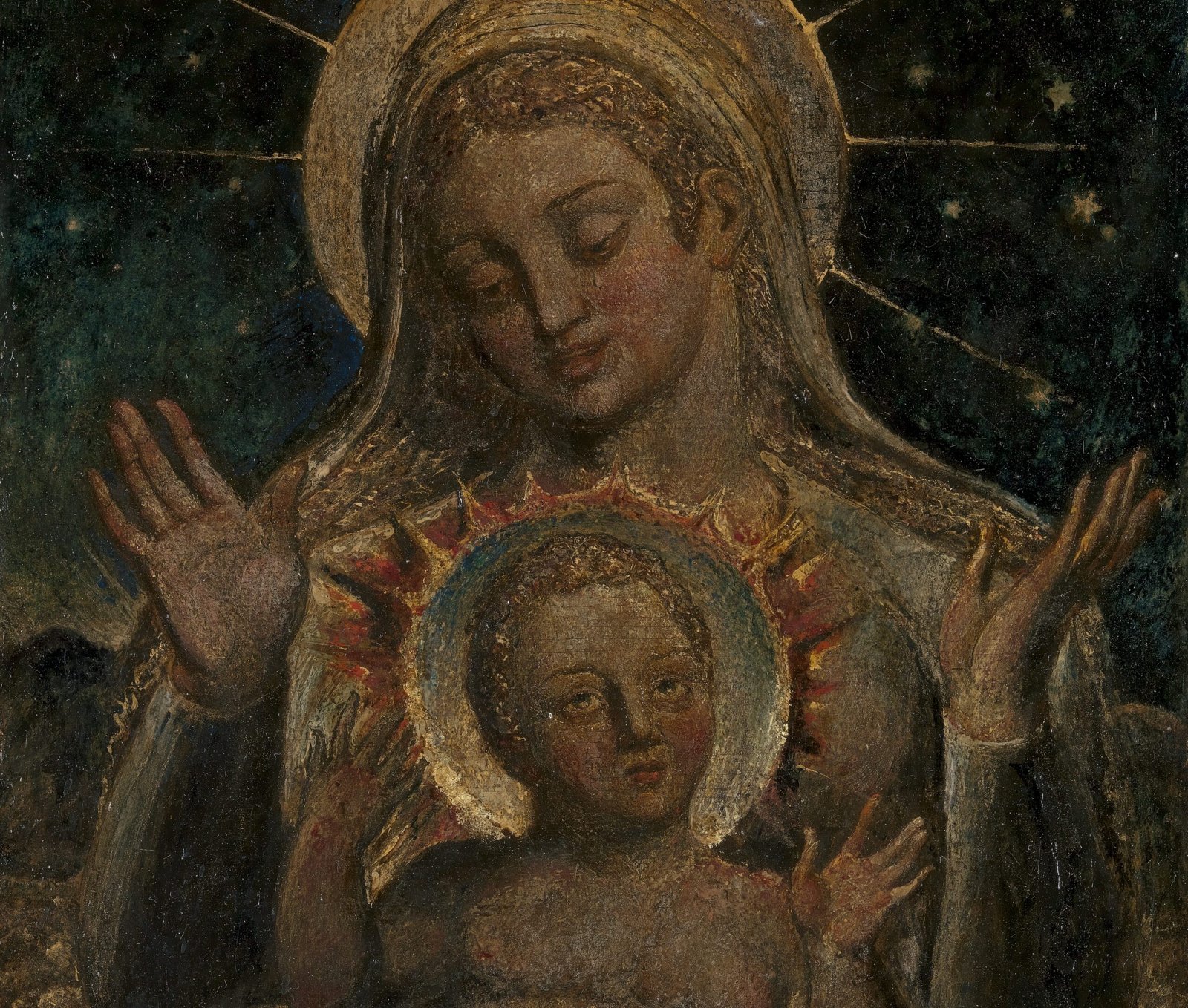Trailer: Written and directed by Titus Kaphar, “Exhibiting Forgiveness” reflects the artist’s life, reconnecting with his father after 15 years, and prominently features his paintings. The film is set to open in theaters in Oct. 18, 2024. | Video by Roadside Flix
THE STIRRING PAINTINGS OF Titus Kaphar (b. 1976) and the artist’s own life experience inspired his directorial debut. “Exhibiting Forgiveness” is about the relationship between a father and son, the pain and anguish of absence, and the potential for healing and forgiveness. It’s a visually arresting film with a heart-wrenching narrative.
“Exhibiting Forgiveness” follows Tarrell (André Holland), a successful artist who returns to his hometown with his wife Aisha, a singer-songwriter (Andra Day), and their son, and encounters his estranged father La’Ron (John Earl Jelks). Joyce, Tarrell’s mom (Aunjanue Ellis-Taylor), encourages him to be open-minded and give his father a chance to explain and redeem himself. Tarrell is doubtful it’s worth the risk of opening old wounds after 15 years.
The trailer for the film shows a heated exchange between Tarrell and his father and a strained conversation with his mom. “Listen, I need you to speak to him. I need you to talk to him,” she said of his father. Tarrell repeatedly responded, “No.” When his mother declared, “He has has changed.” Tarrell dismissed the notion. “He ain’t changed,” he said.
After premiering at the Sundance Film Festival in January and screening at Lincoln Center in New York in April, “Exhibiting Forgiveness” is opening in theaters on Oct. 18. In advance of the film’s theatrical debut, the paintings that inspired the project will be on view in Los Angeles. “Titus Kaphar: Exhibiting Forgiveness,” the gallery exhibition, opens Sept. 13 at Gagosian Beverly Hills.
A MACARTHUR FELLOW (2018) who earned an MFA from Yale School of Art (2006), Kaphar is represented by Gagosian, one of the most prominent galleries in the world. In 2021, he joined UTA in anticipation of adding film projects to his portfolio.
Kaphar developed his artistic practice around challenging art historical images from the 18th and 19th centuries and the American history narratives they normalize. He physically manipulates his canvases by cutting them, rolling them up, covering them with tar, or whitewashing them with paint in an effort to center overlooked subjects, surface suppressed histories, and reckon with the nation’s shameful racial past. His more recent work employs similar methods of erasure and removal to address contemporary challenges, traumas, and uncertainty, including police killing innocent Black people and countless Black mothers enduring loss.
The paintings that inspired “Exhibiting Forgiveness” are an extension of this recent work, framing ordinary domestic scenes with a similar palette of muted tropical colors, through a haunting, contemporary lens. An earlier body of work speaks to the heart of the film.
A decade ago, Kaphar developed The Jerome Project (2014-). Seeking answers about his father through prison records, he made a series of devotional portraits based on mug shots and interviews with 97 other men who shared the same first and last name as his father. He painted the portraits on shield-shaped wood panels against gold leaf backgrounds and dipped the works in black tar, covering portions of their faces initially based on the number of years on their prison sentences.
TITUS KAPHAR, “So vulnerable,” 2023 (oil on canvas, 120 x 108 inches / 304.8 x 274.3 cm). | © Titus Kaphar, Photo by Owen Conway
EXHIBITING FORGIVENESS has received positive reviews, on balance, and benefits from a talented cast and impressive paintings that play a central role in the storytelling. The Hollywood Reporter, said the film was “bolstered by an arresting performance by its lead, André Holland.” Vanity Fair said Holland “gives a career-best performance in the kind of showcase role he’s long deserved.” Rotten Tomatoes gave it a 95 percent rating.
In its review, Deadline called the film “thought-provoking,” but cited issues with the story arc. “The audience sits through so many traumatic moments and then is asked to find optimism in the experience, which may work for some and not for others as it’s just not a simple choice,” Valerie Complex wrote for Deadline. “Maybe it would have worked for me if it were balanced by more levity, but it isn’t. It’s a constant beating.”
Writing for IndieWire, Jourdain Searles said: “Subtle and poetic, Kaphar crafts his story with a soft hand, reminiscent of films like ‘Moonlight’ and ‘The Last Black Man in San Francisco.’” She added: “But like many first features, there’s a sense that we could see and know more about these characters. At times the film feels too contained and restrained in its dialogue.”
The film began as a documentary film before Kaphar transformed it into a feature. The artist had returned home to Michigan where he grew up and his father happened to be in town and wanted to talk with him. Kaphar agreed on the condition that he could film the encounter, terms he said his father accepted.
The documentary he made based on the conversation proved to be limiting in format, he found. “I just felt like it could only clarify that moment. It could only clarify right now, but it was difficult to clarify why we got to that moment,” Kaphar said in a discussion about the film at Lincoln Center.
“I have been disappointed with a lot of movies about painters, so when I first started thinking about this, I knew that whoever played the role was going to have to actually learn how to paint.” — Titus Kaphar
ENVISIONING THE PROJECT as a feature film, Kaphar said “not every single scene is factually as it happened, but there’s truth in every moment.” When he considered the integrity of the film and how it would unfold, several elements were a priority.
“I have been disappointed with a lot of movies about painters,” the artist said, “so when I first started thinking about this, I knew that whoever played the role was going to have to actually learn how to paint.” Holland worked with Kaphar for three months in his studio, reading books about art and technique and learning to draw and paint. In the film, Holland actually paints with level of authenticity that met Kaphar’s approval. The artist said the actor looks like he knows what he is doing.
Domestic violence and drug use are referenced in the narrative, but neither behavior is shown on screen. In addition, the fractured relationship between father and son is not easily healed. Unlike many other projects with similar storylines, the outcome is not readily predictable. At the conclusion of the film, Kaphar hopes the audience leaves with differing opinions about where things stand and whether reconciliation is possible, an ending informed by the real life circumstances between the artist and his father.
“This film is for anybody who’s ever struggled with forgiveness, the generation of us whose parents struggled with addiction in the 80s and 90s. Now we’re old enough to be parents and our children are beginning to ask us questions,” Kaphar said in a Sundance Institute video. “I think this film sets up a framework for the difficult conversations that must be had, but it also shows us one artist’s strategy for generational healing.” CT
FIND MORE about Titus Kaphar on his website, NXTHVN’s Instagram, and at Gagosian gallery
FIND MORE Titus Kaphar is a co-founder of NXTHVN in New Haven, Conn., a nonprofit arts organization that provides education, mentorship, and networking opportunities through fellowship and apprenticeship programs for emerging artists and curators. “Double Down,” an exhibition presented by NXTHVN Cohort 05 artists and curators is currently on view in collaboration with James Cohan Gallery at The Campus in Hudson, N.Y., through Oct. 27, 2024
“Titus Kaphar: Exhibiting Forgiveness” is on view at Gagosian Beverly Hills, from Sept. 13–Nov. 2, 2024
Meet the Artist: On the set of “Exhibiting Forgiveness,” artist, writer, and director Titus Kaphar talks about the film, motivations for embarking on the project, and the transition from making paintings to making a movie. “I want to try to find a way to bridge, for me, the gap between painting and film making. They’re often two very different audiences. I think there’s a potential for this film to bring those two groups,” Kaphar said. | Video by Sundance Institute
Following a New Directors/New Films screening at Lincoln Center in New York, Titus Kaphar and André Holland talk about making Exhibiting Forgiveness. Kaphar who directed and wrote the film talks about how the narrative reflects his real life experience and where his relationship with his own father stands. | Video by Lincoln Center
BOOKSHELF
The publication “Titus Kaphar: Exhibiting Forgiveness” charts the development of the artist’s film project from script to screen and is forthcoming in February 2025. “Redaction” documents a collaborative exhibition by Titus Kaphar and Reginald Dwayne Betts. “Fired Up! Ready to Go! Finding Beauty, Demanding Equity: An African American Life in Art. The Collections of Peggy Cooper Cafritz” documents the life and art collections of philanthropist Peggy Cooper Cafritz (1947-2018). The volume includes commentary from several artists the collector supported including Kaphar. When he first began to consider the kinds of programs and opportunities realized at NXTHVN, Kaphar reached out to Cafritz. In the book he says, “When I first started thinking about the project, it began with a call to Peggy. She has made me very aware of my responsibility to others, especially younger artists. My work in New Haven has absolutely been influenced by her work. She leads by example.”







